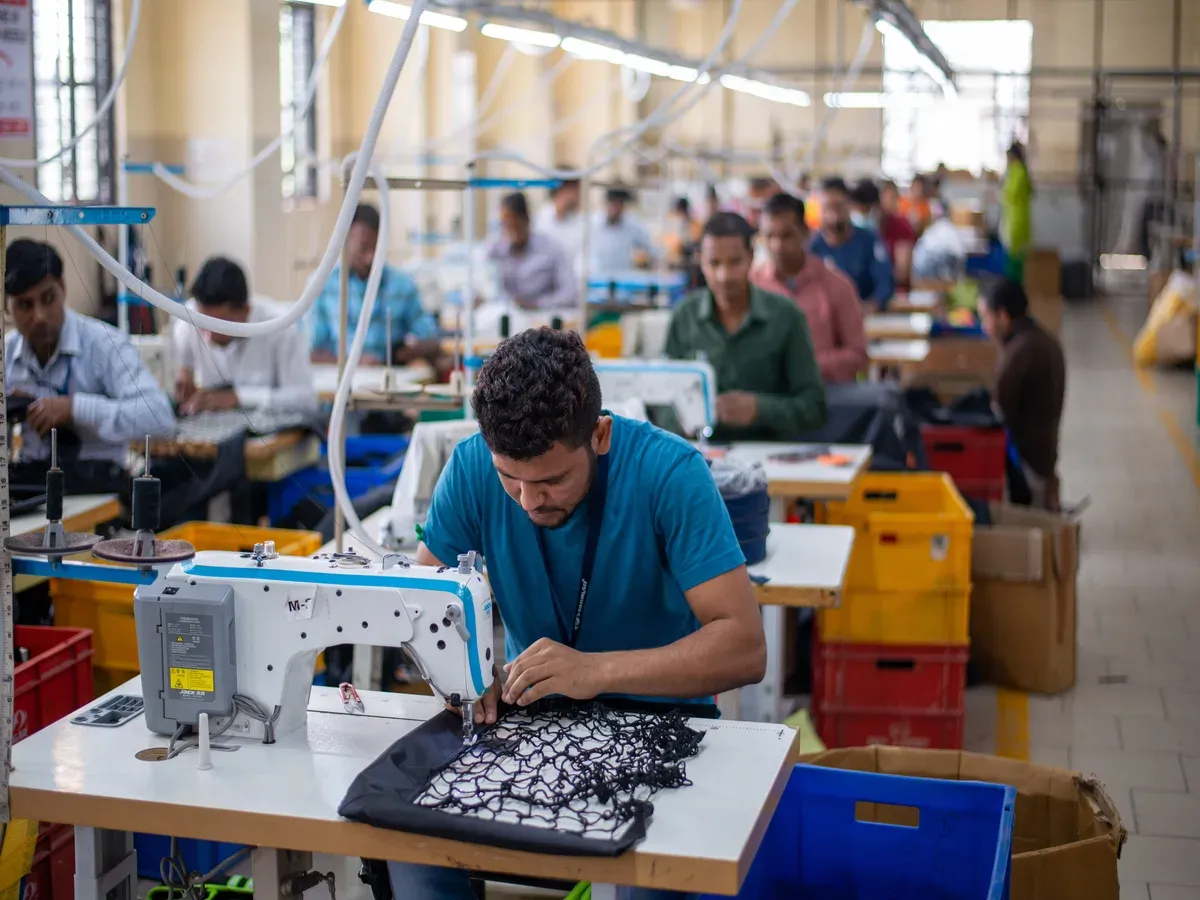Market News
GST 2.0 reform sparks mixed reaction in textile stocks; Gokaldas Exports, Trident slip while Kitex Garments edge higher
.png)
4 min read | Updated on September 05, 2025, 11:55 IST
SUMMARY
The government on Thursday said that the rationalisation of GST rates for the textile sector is expected to reduce costs, support exports
Stock list

Key GST rationalisations include a 5% rate up to ₹2,500 per piece for readymade garments and made-ups from ₹1,000 earlier. Image: Shutterstock
Textile stocks were trading mixed on Friday, September 5, with sentiment being cautious following the new GST reforms.
The GST Council, in its meeting held on September 3, approved increasing the GST rate from 12% to 18% on apparel and clothing accessories of sale value exceeding ₹2,500 per piece and on other made-up textile articles and sets of sale value exceeding ₹2,500 per piece.
Shares of Kitex Garments gained 2.47%, while Aditya Birla Fashion and Retail rose 0.89%, and Vedant Fashions, the owner of Manyavar, advanced 0.78%. Vardhman Textiles (0.40%), Bombay Dyeing (0.38%), Welspun Living (0.28%) and VIP Clothing (0.17%) also traded in the green on Friday.
On the other hand, profit booking weighed on some counters. Gokaldas Exports slipped 1.78%, Indo Count Industries fell 0.84%, KPR Mills dropped 0.63%, Trident declined 0.32%, and Raymond Lifestyle edged down 0.02%.
The government on Thursday said that the rationalisation of GST rates for the textile sector is expected to reduce costs, support exports, sustain jobs and stimulate domestic consumption to catalyse India's textile and apparel market towards the $350 billion target by 2030.
Key GST rationalisations include a 5% rate up to ₹2,500 per piece for readymade garments and made-ups from ₹1,000 earlier.
This makes affordable apparel cheaper, particularly for middle-class and low-income households.
"It is expected to revive demand in Tier-2/3 towns and rural markets. Given the labour-intensive nature of garmenting, higher demand will sustain and expand employment, especially for women in stitching, tailoring, and finishing units.
"The move will also support Make in India brands, helping them compete with cheap imports in low- and mid-price segments," the Textile Ministry said.
Besides, the GST has been reduced from 18% to 5% for fibres and lowered from 12% to 5% on yarns.
This corrects the inverted duty structure (IDS), aligns fibre-yarn-fabric rates, and removes long-standing working capital burdens on manufacturers.
"With a large share of MMF production in small and medium units, the cut eases cost pressures, strengthens cash flows, and makes Indian MMF-based garments globally more price-competitive, supporting India's ambition to emerge as a hub for synthetic textiles and MMF garments," the ministry said.
The reforms correct anomalies at the fibre stage, reduce costs at the yarn and fabric stages, improve garment affordability, revive demand at the retail stage, and enhance export competitiveness, it added.
The Retailers Association of India (RAI) and the Clothing Manufacturers Association of India (CMAI), while welcoming the two-slab GST framework and the removal of the inverted duty structure across the textile value chain, argued that garments priced above ₹2,500 are also consumed in large numbers by the common man and the middle class.
Placing garments and footwear priced above ₹2,500 in the 18% GST slab could hurt middle-class affordability and weaken organised retail and the garment sector, RAI said in a statement.
"All garments and footwear should ideally be taxed at 5%, or at the very least, a more reasonable price threshold should be established," it noted.
Expressing similar views, CMAI said in the entire value chain from fibre to garment, garments above ₹2,500 are the only products which are not at 5%.
Meanwhile, last month the government extended the duty-free import of cotton by three more months until December 31 to support textile exporters facing steep 50% tariffs in the US.
Earlier, on August 18, the Finance Ministry had allowed duty exemption on cotton imports from August 19 till September 30.
About The Author
Next Story

